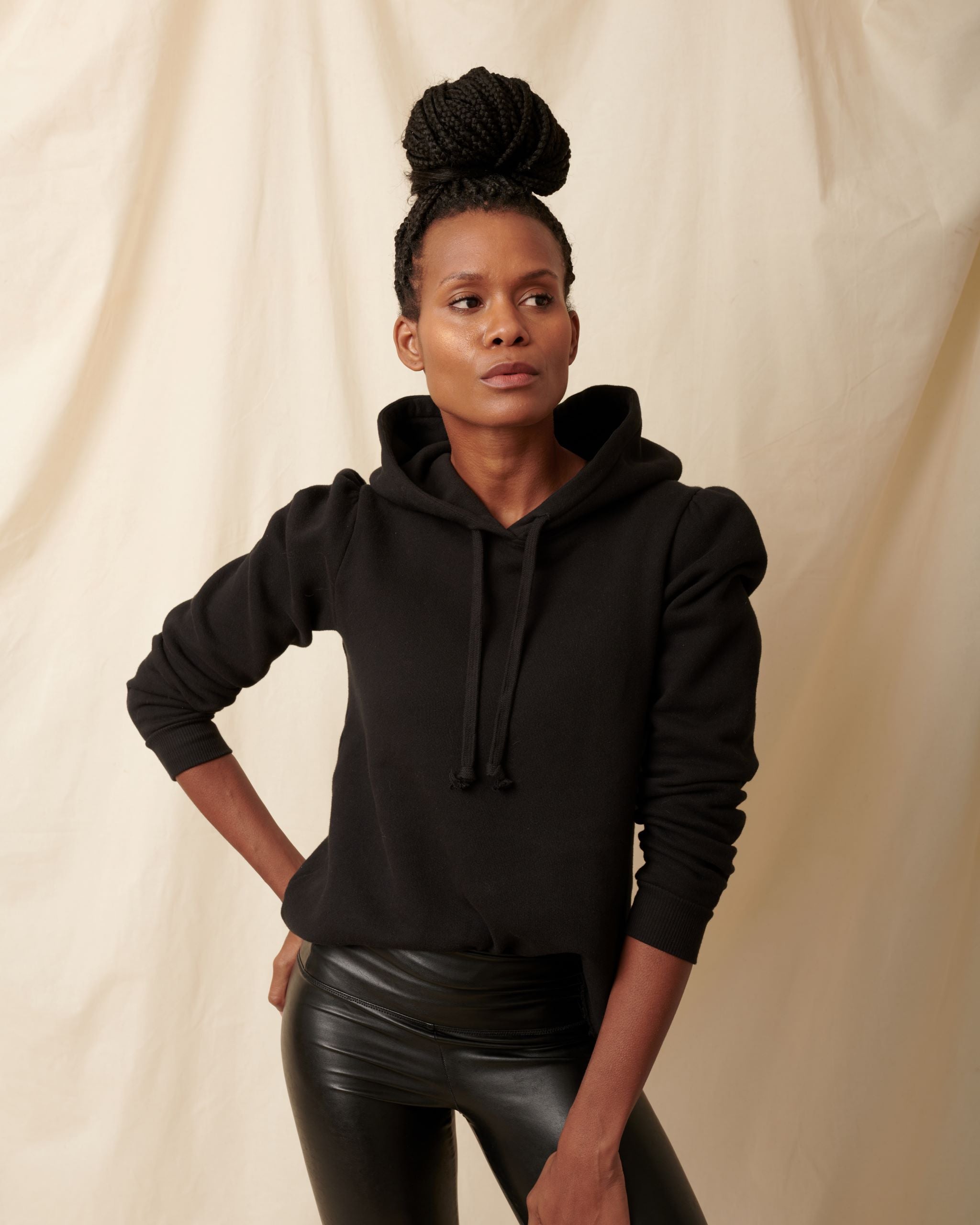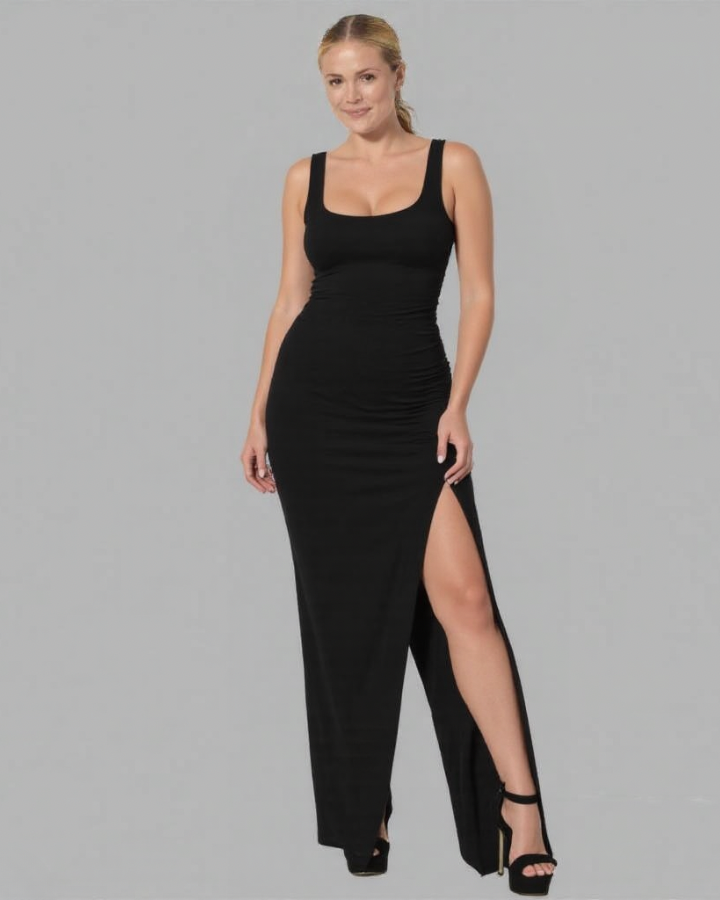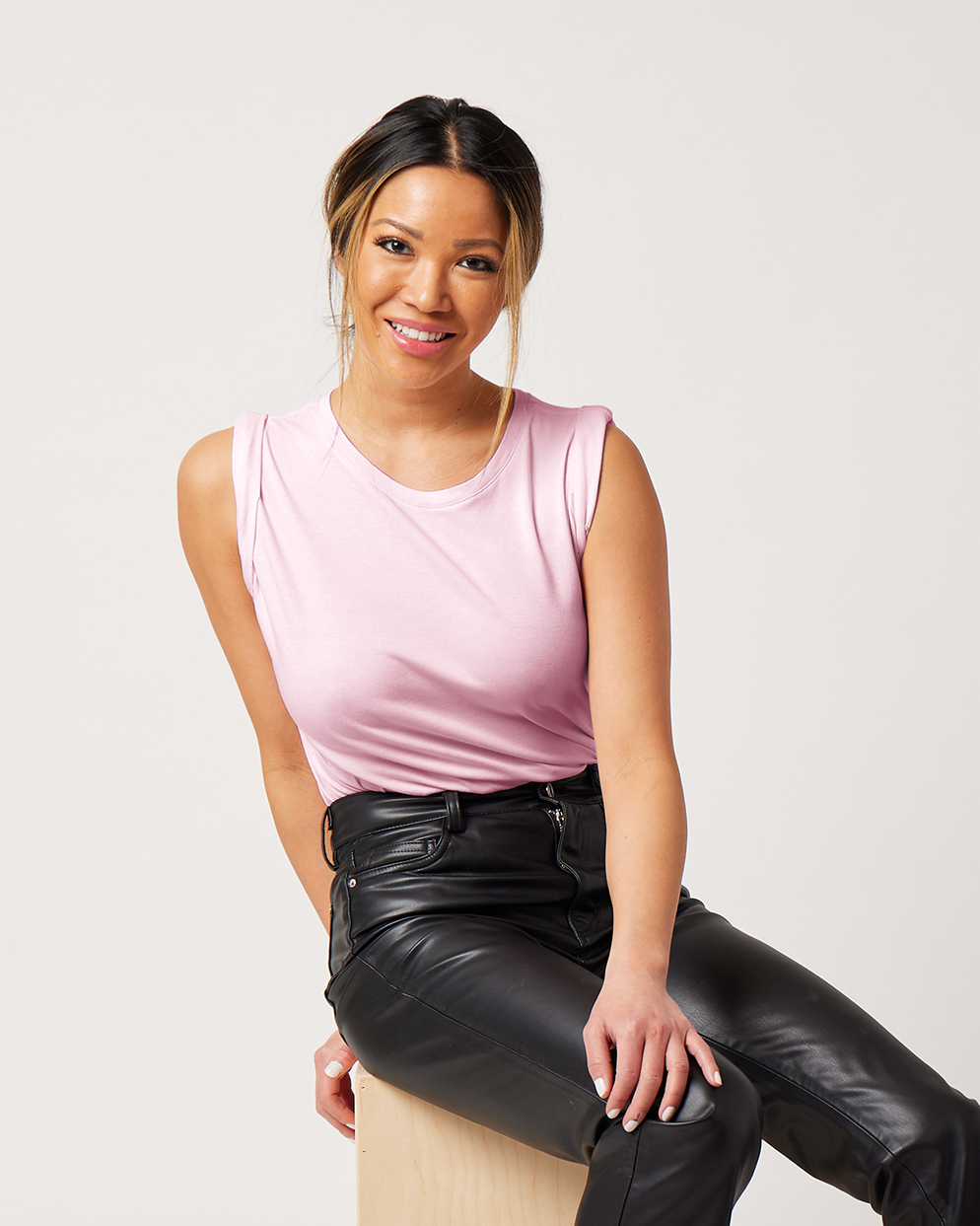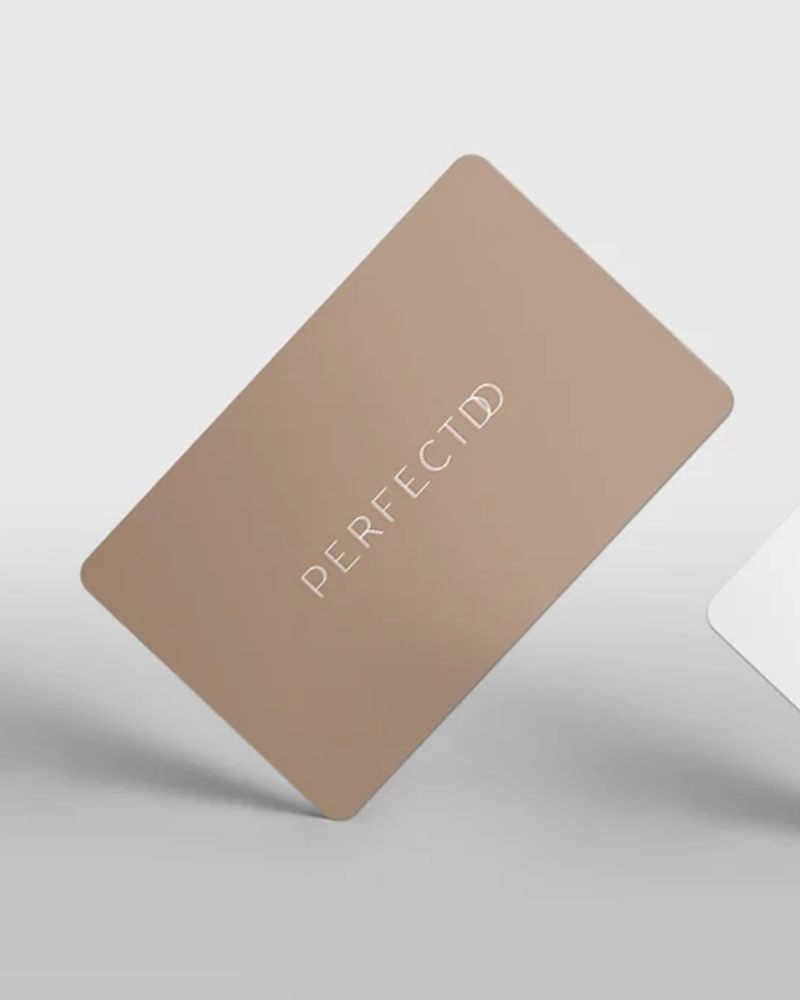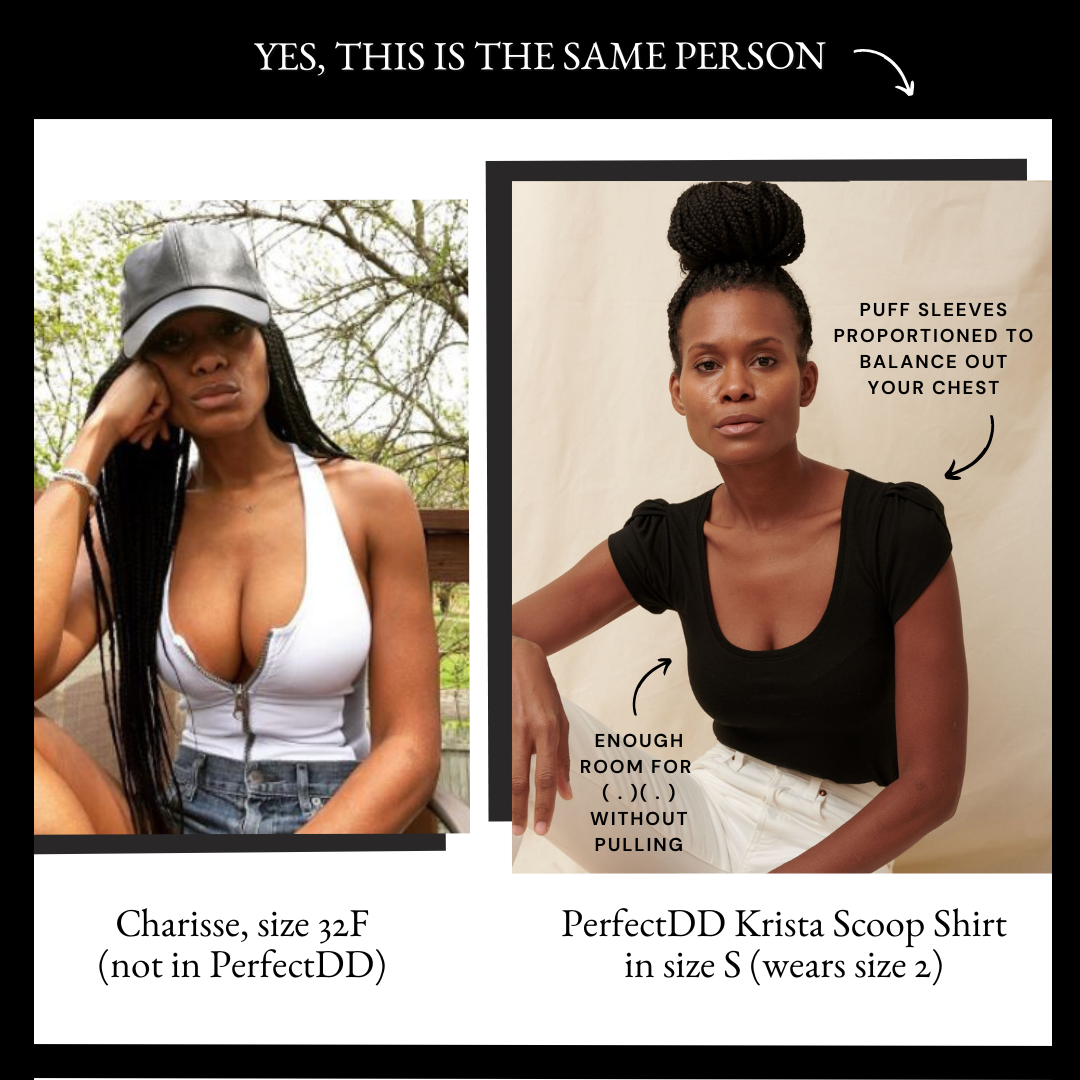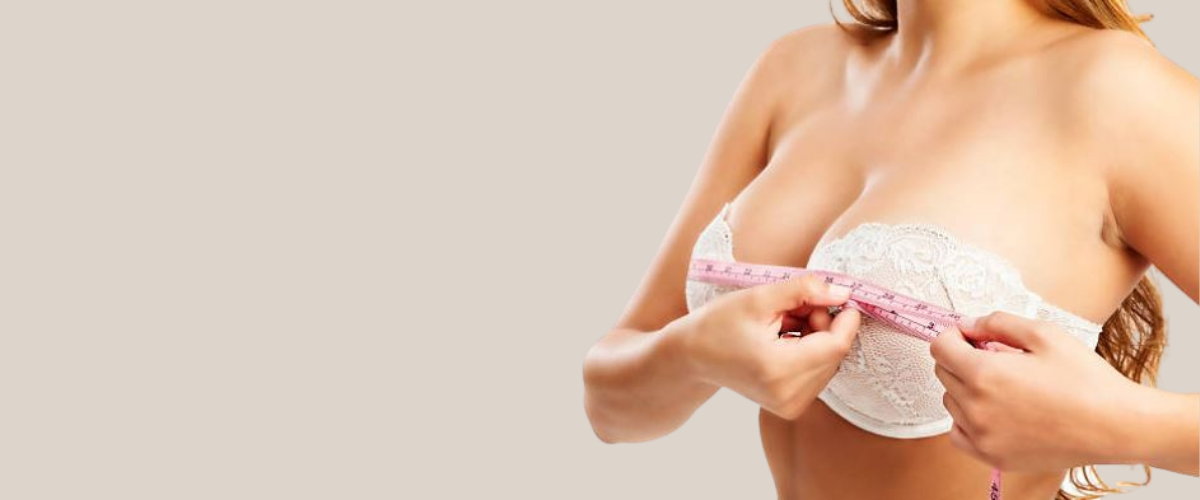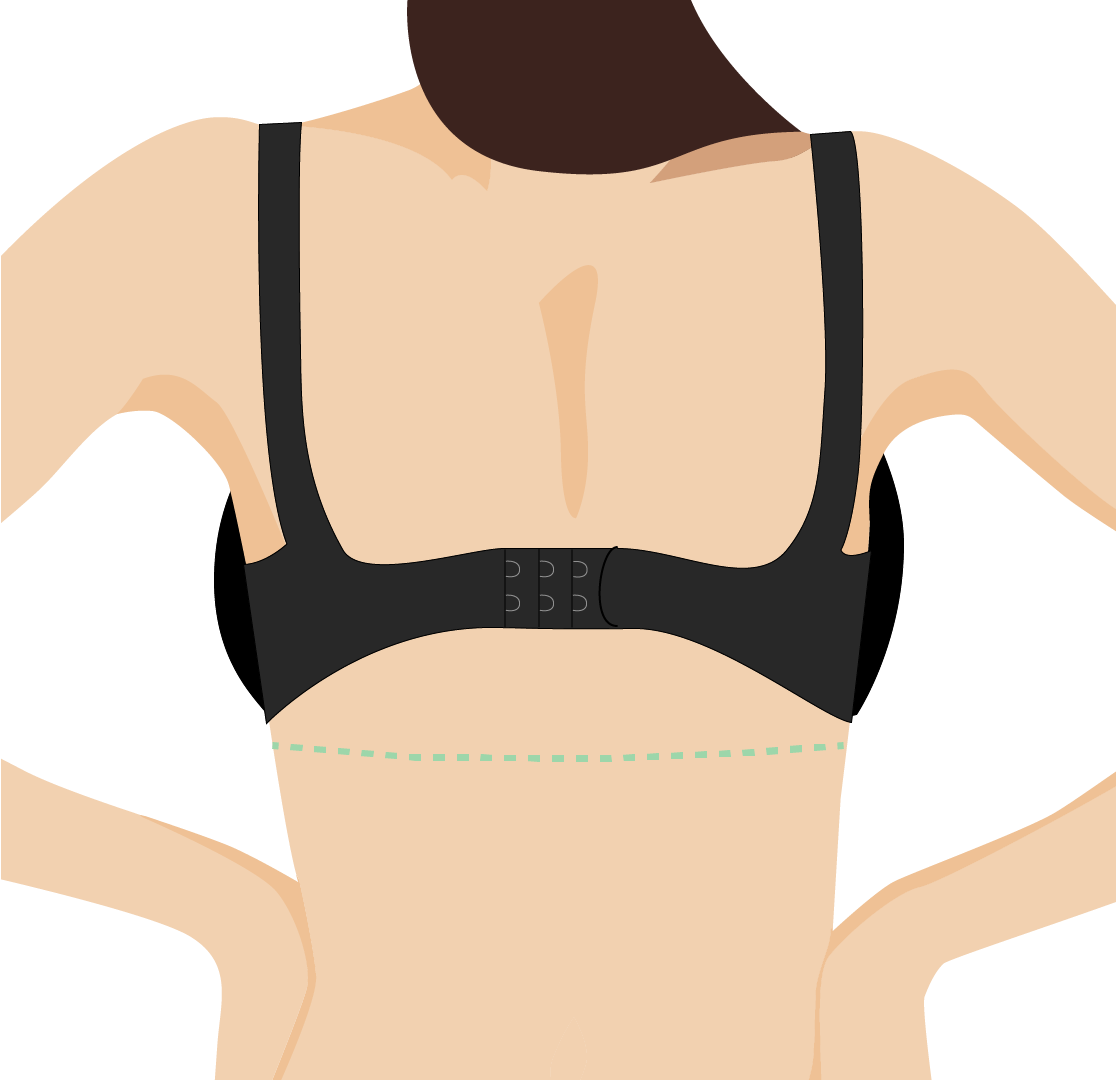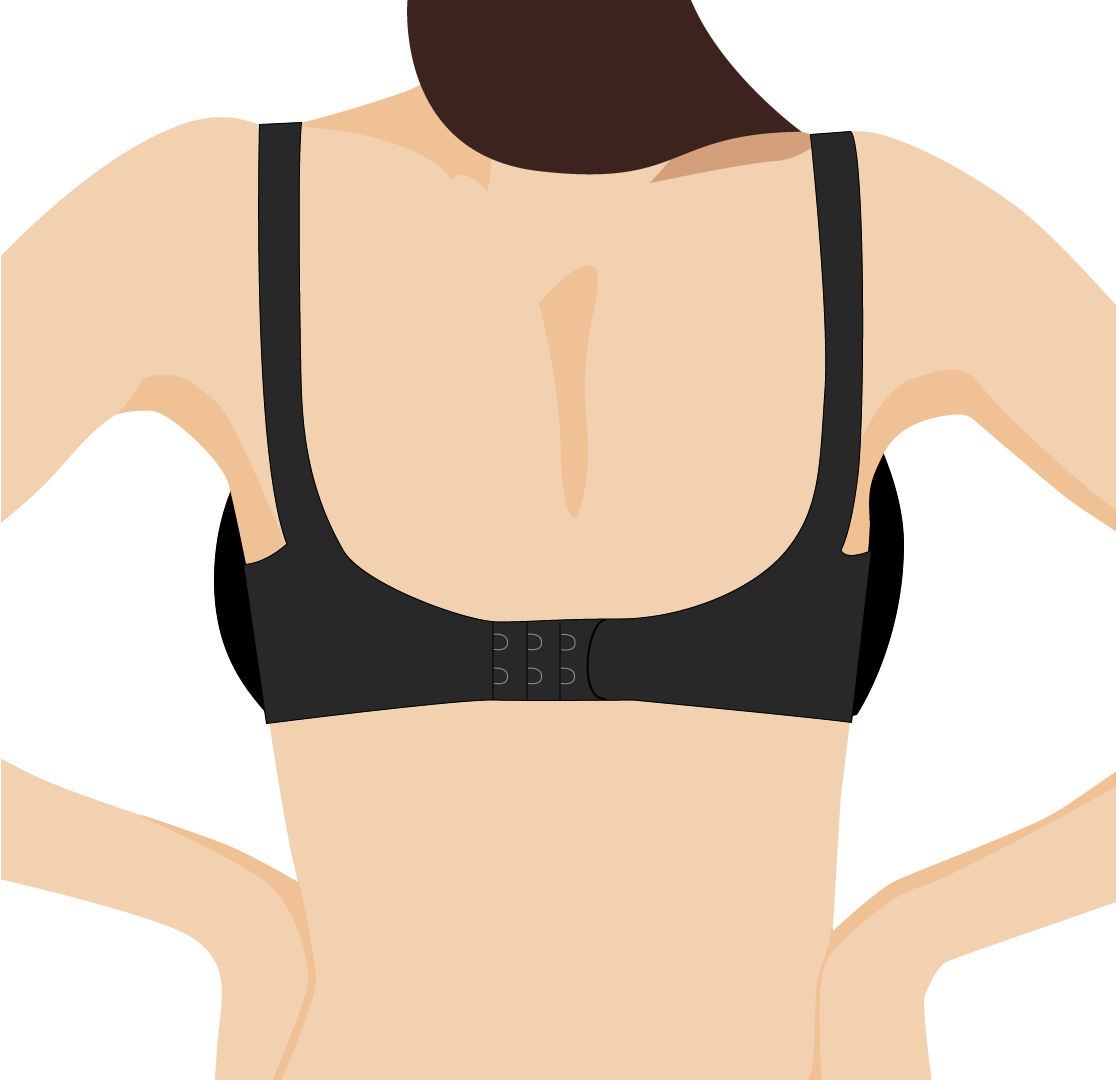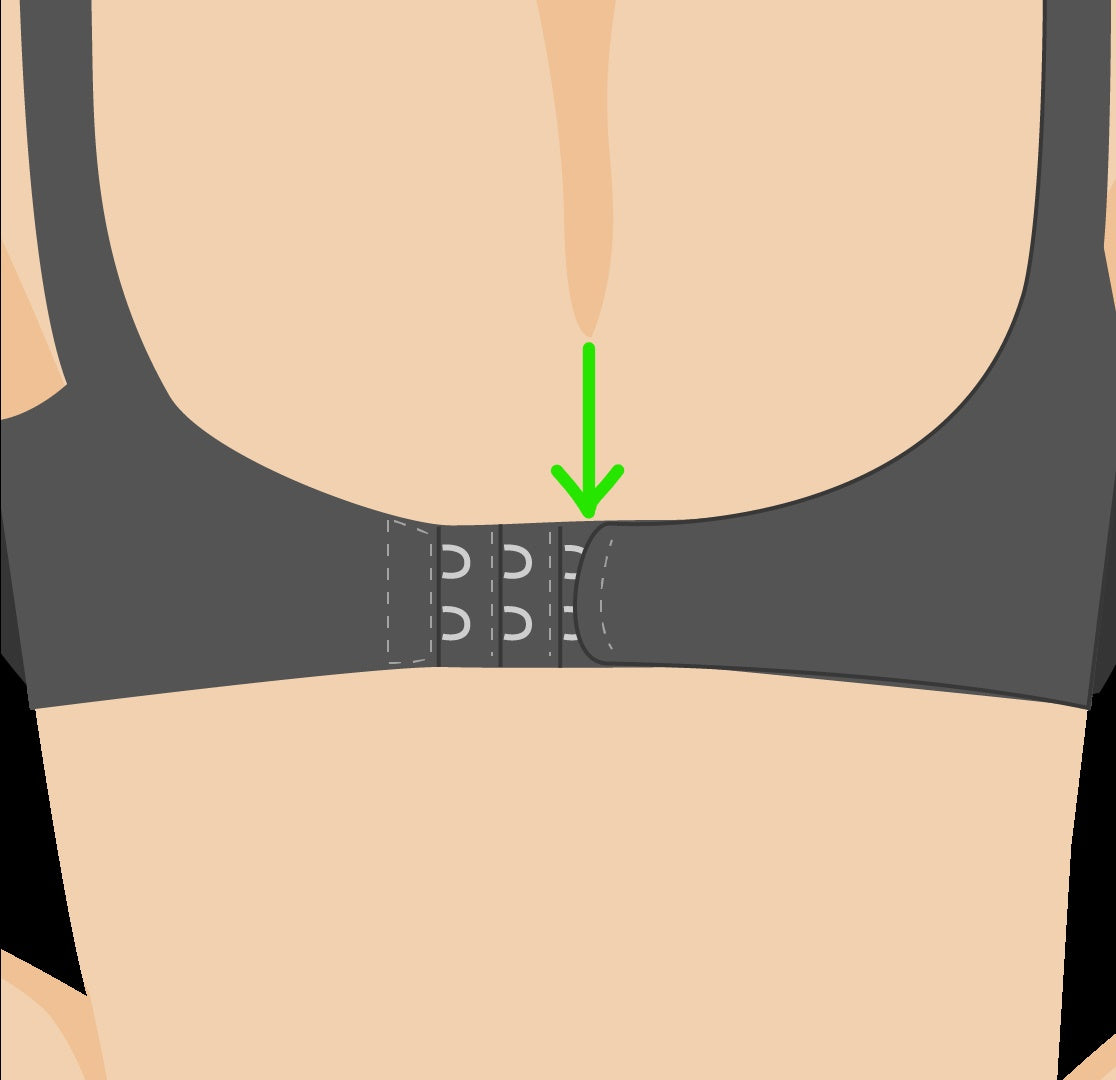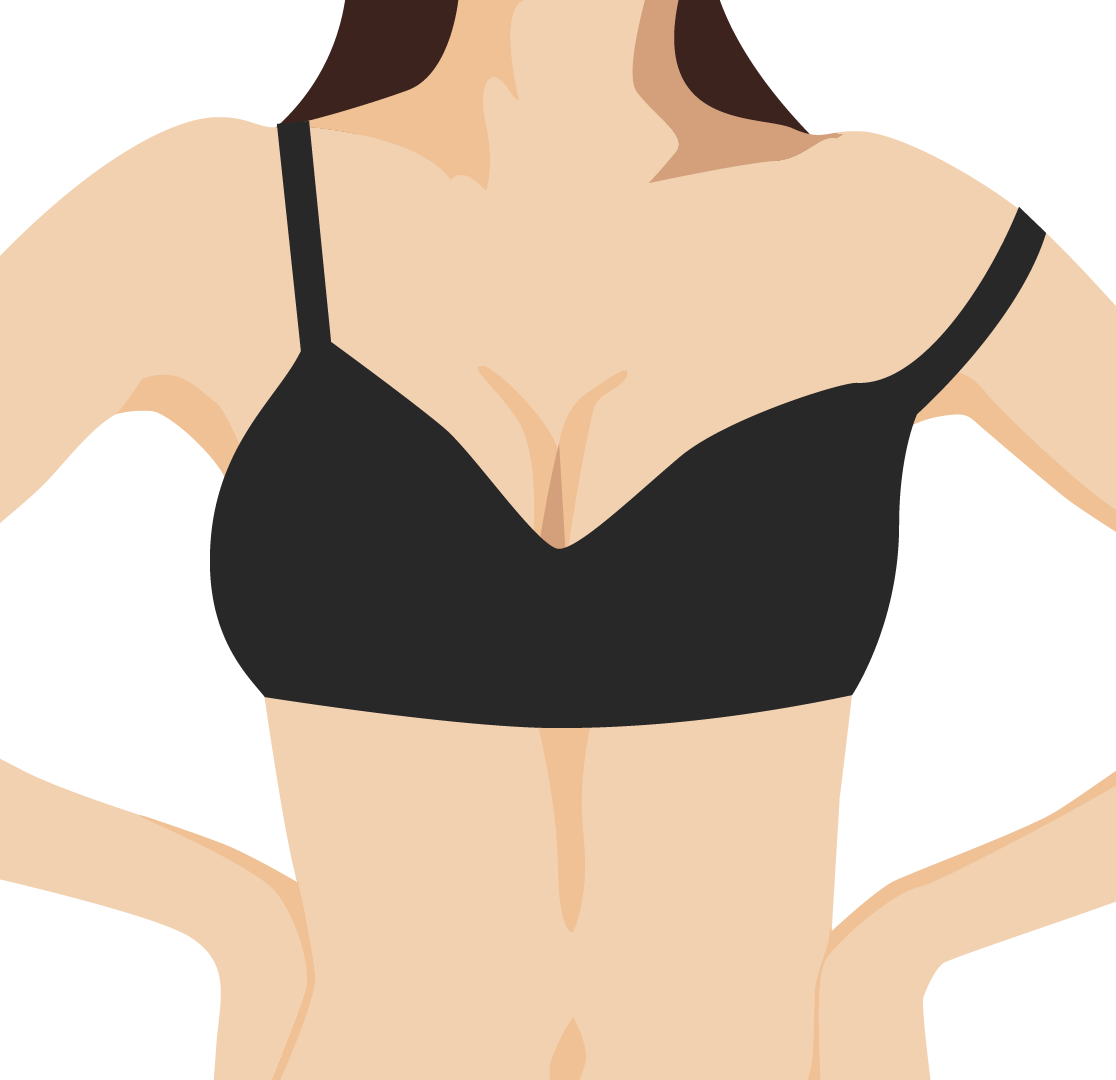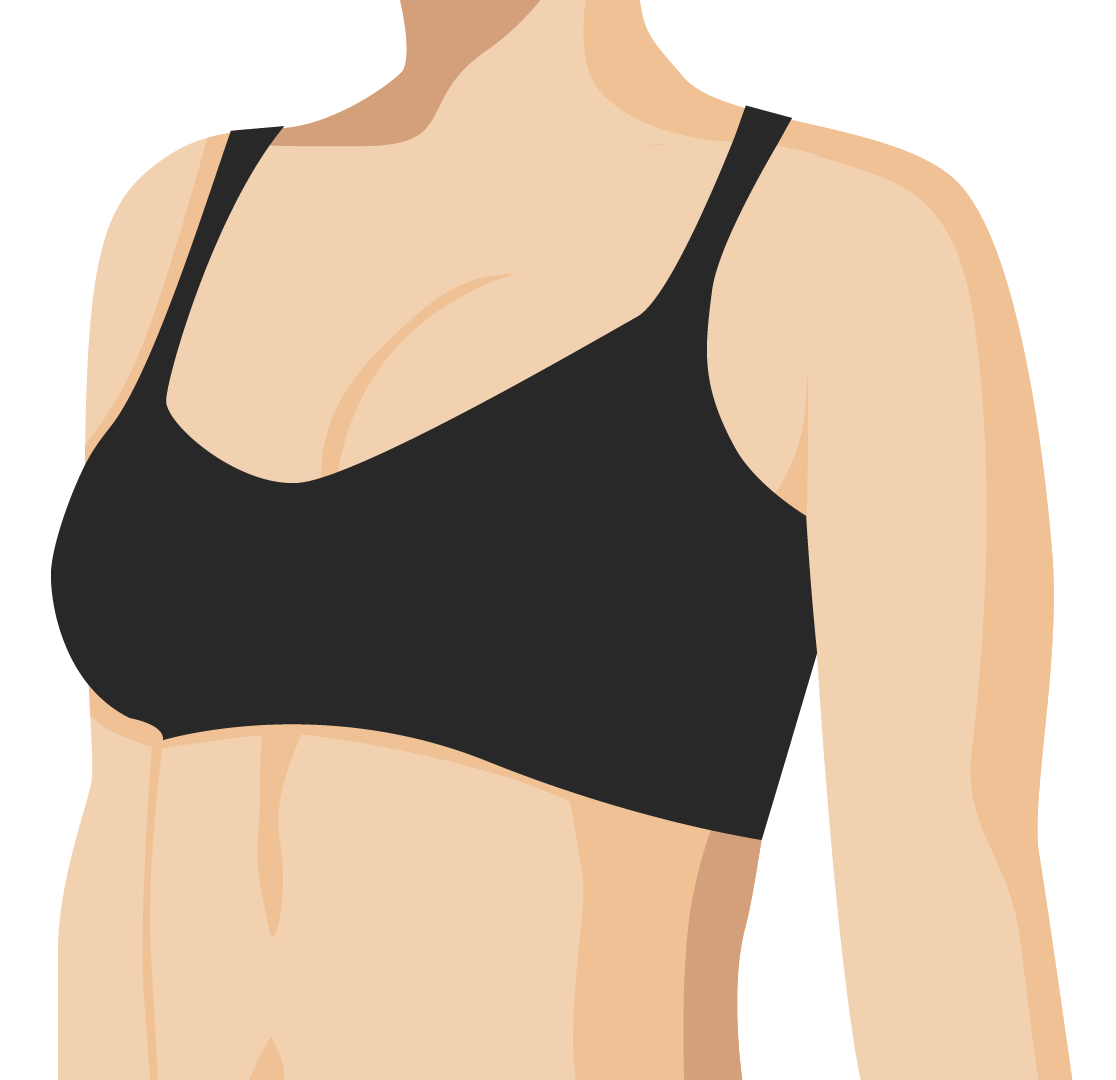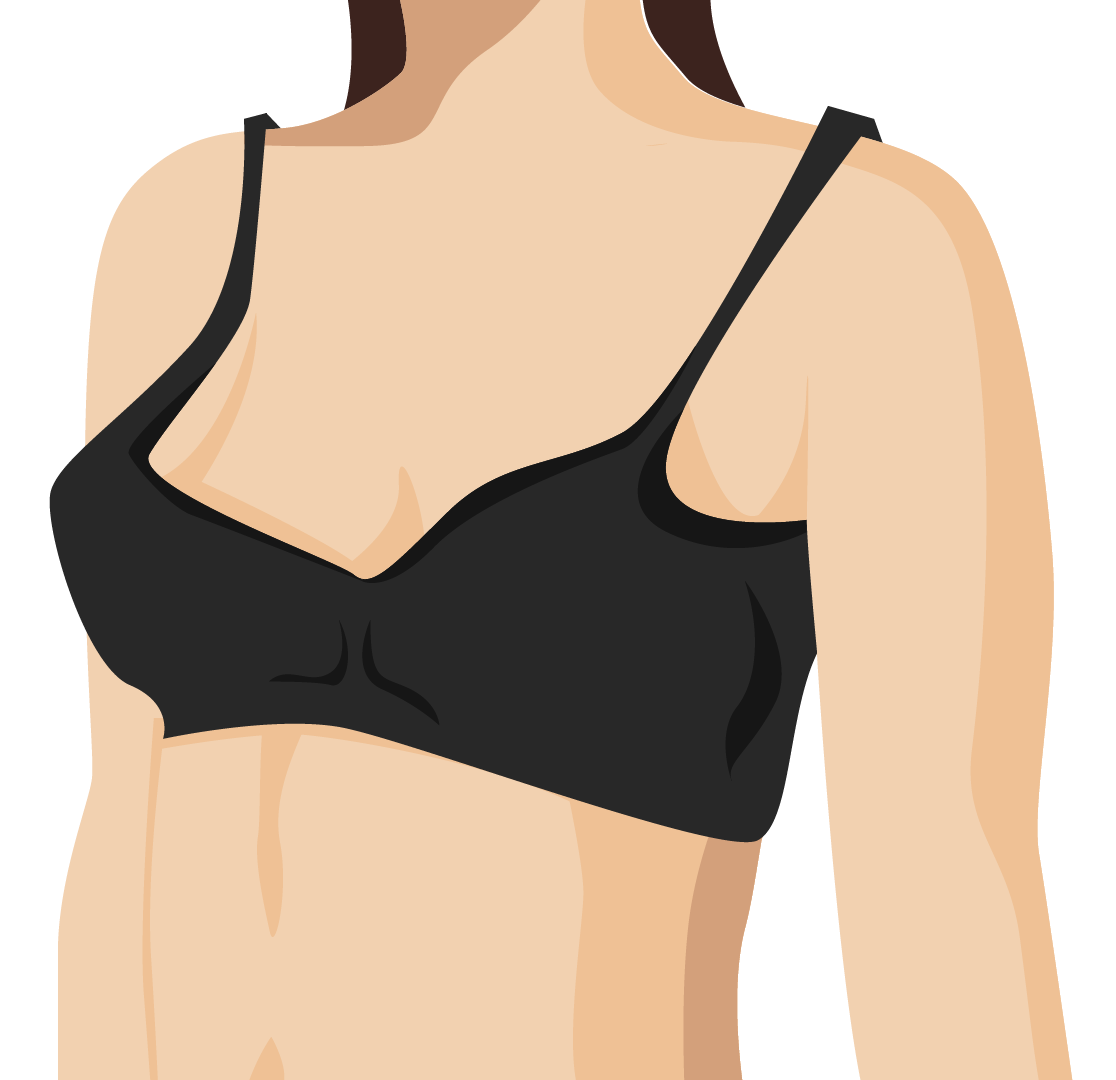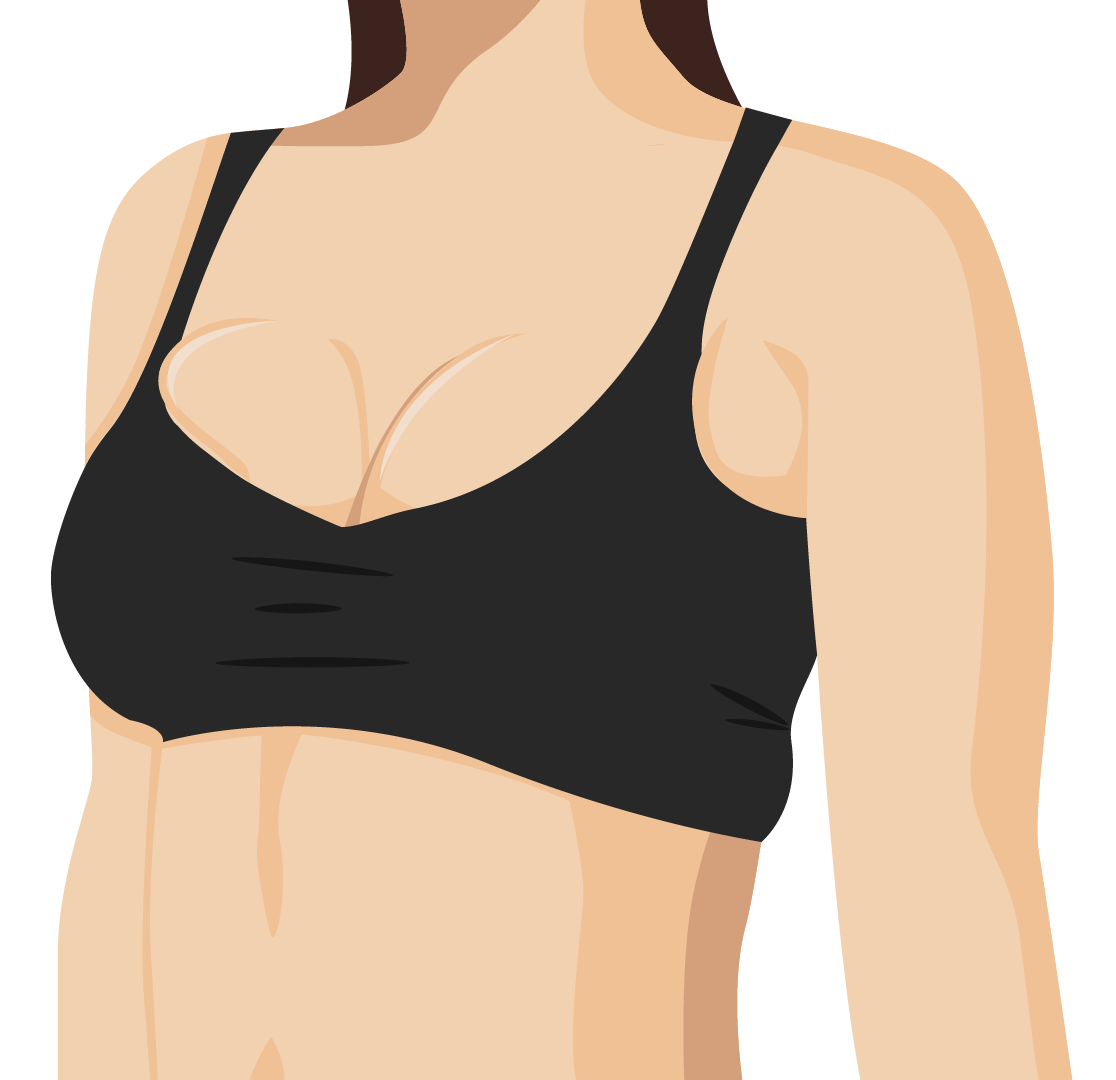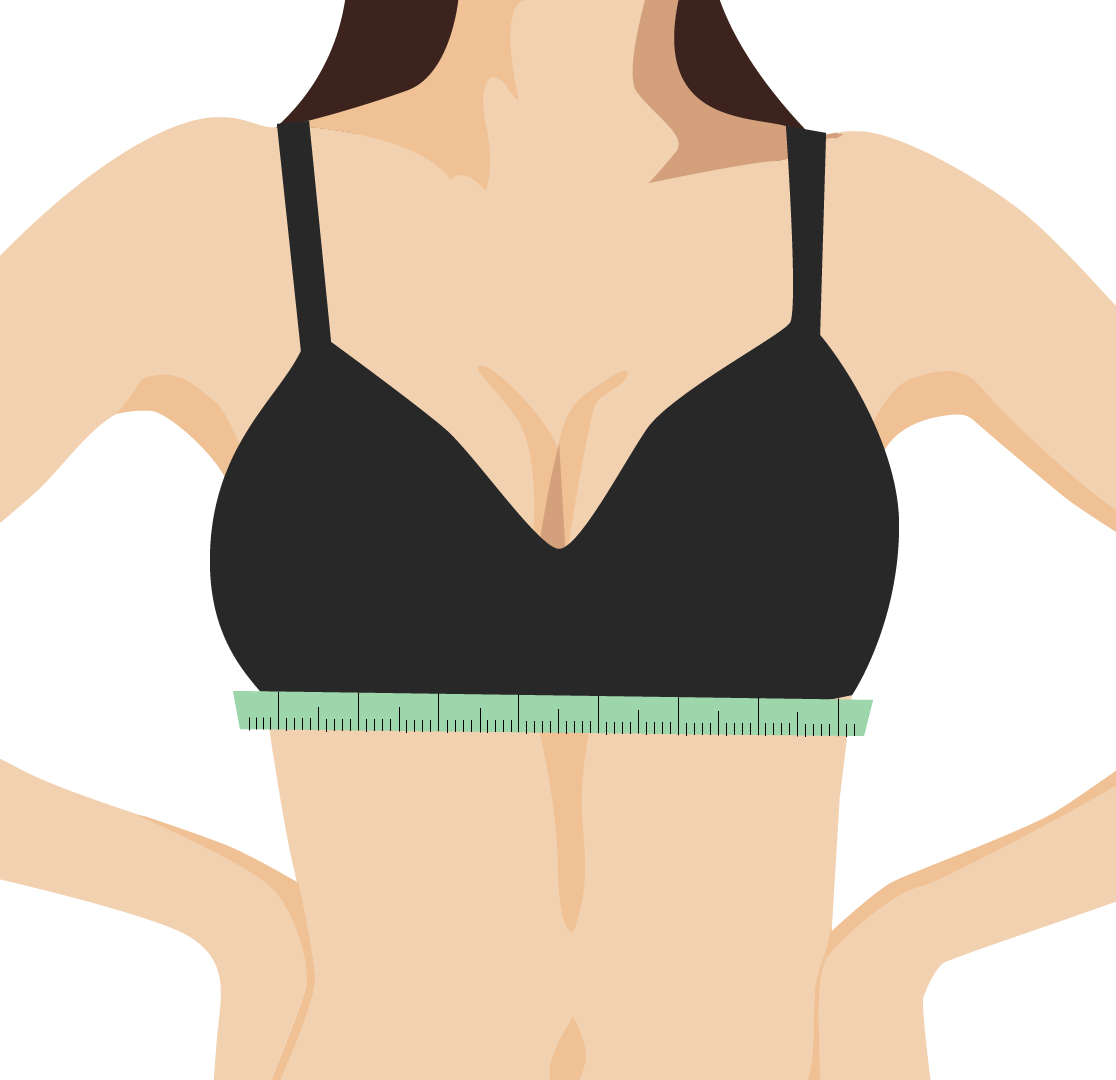
1. Measure Your Band
Wearing an unlined bra, take a measuring tape across your back and wrap it snugly around under your bust. Make sure the tape is level across your body.
If your measurement is an odd number, round up +1 inch, if it's an even number, that's your band size. For example, a 29" measurement would be a 30" band size; a 30" measurement would be a 30" band size.
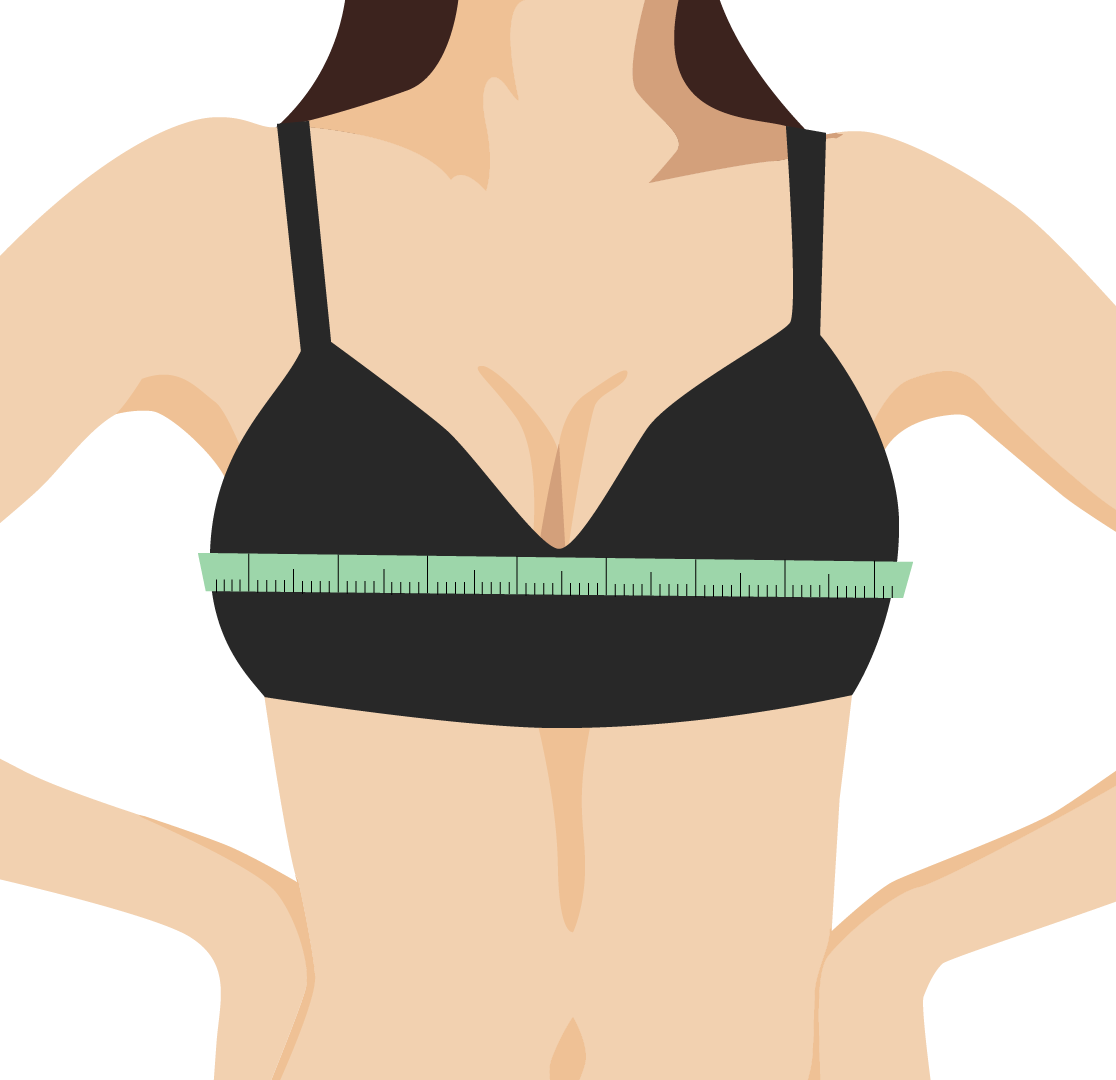
2. Measure Your Bust
Standing straight, take the measuring tape around your back to the fullest part of your chest across the apex. The tape should feel comfortable around your chest, not too loose, not too tight. Round to the nearest whole number.
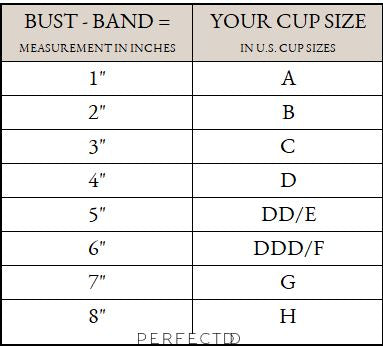
3. Calculate Your Bra Size
Take your Bust Measurement (step 2) minus your Band Measurement (step 1) . Generally, 1" represents a cup size (refer to the chart on the left).
For example, if your bust measurement is 34" minus your band measurement of 29" = 5". This 5" difference is a DD cup. Add your cup size to your band size (determined in step 1) = your bra size, 30DD.
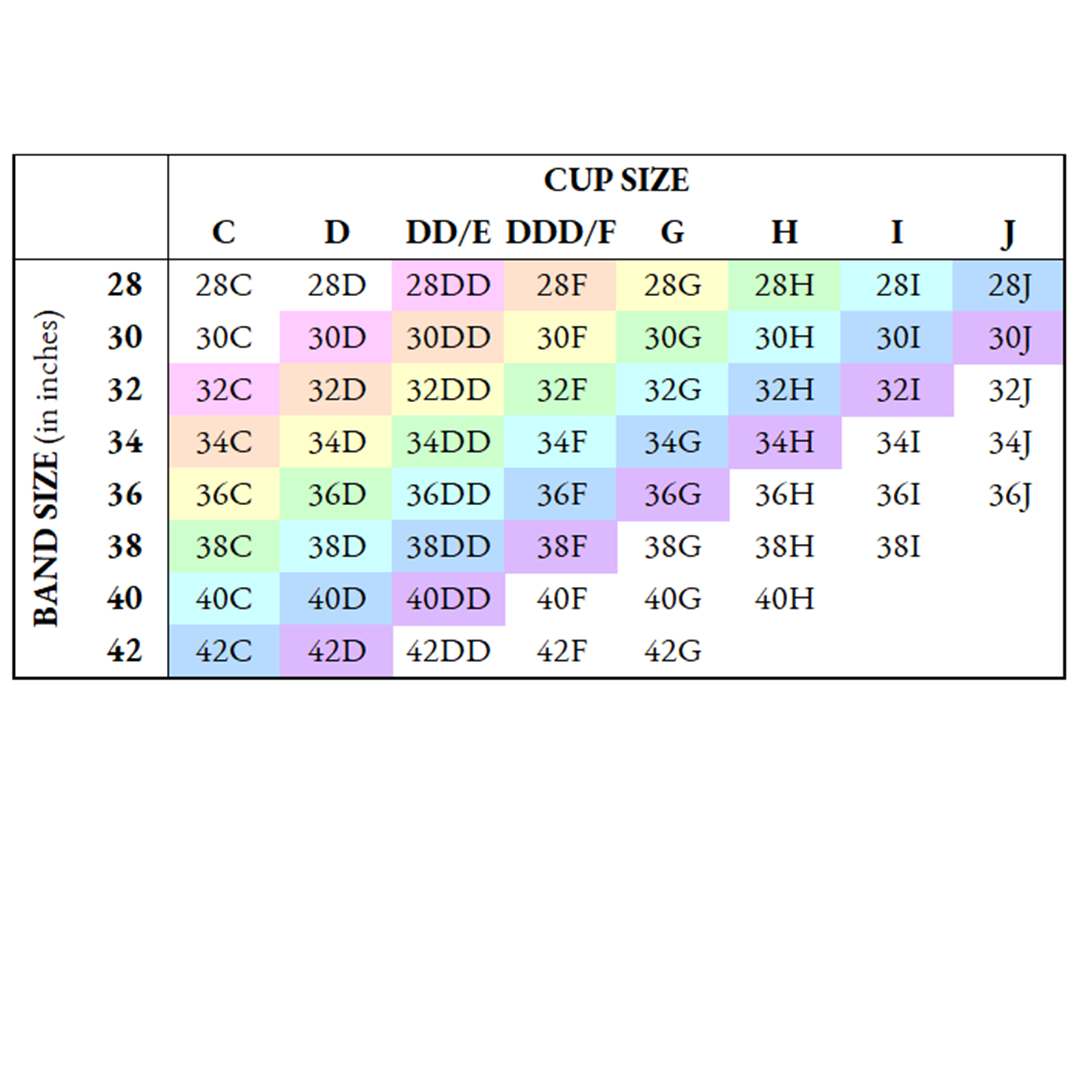
4. Sister Sizing
If your bra doesn't feel comfortable, try "sister sizing." For every band size you go up, you should go down one cup size.
For example, if you are a size 30DD, your sister sizes are 28F and 32D. If your bra feels too tight, try sizing up to 32D. If your bra strap is riding up your back, this is a sign that your bra is too big, try sizing down to a 28F.

